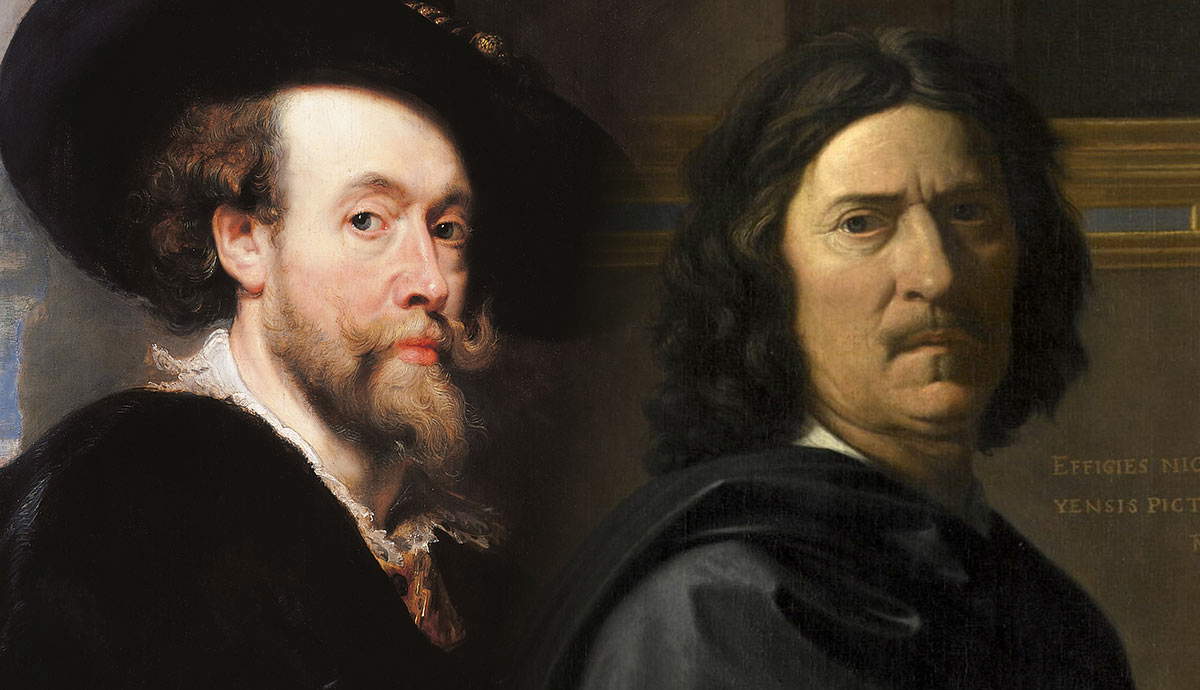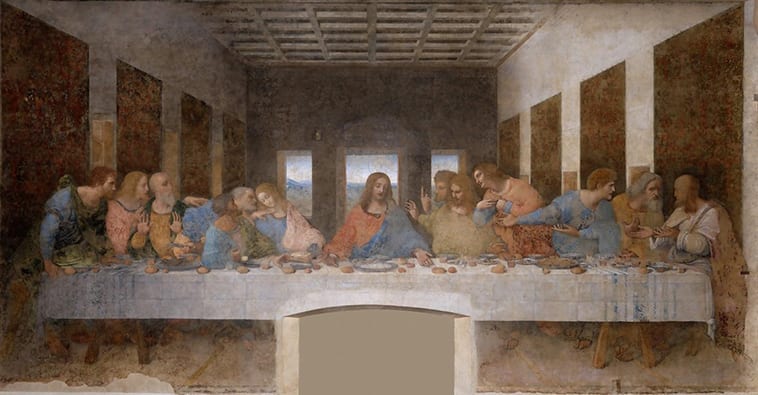
The Italian Renaissance was a period that embraced intellectualism, humanism, and artistic expression. The rejuvenation of ancient Greek and Roman culture marked a return to classical styles and made the Renaissance a golden age for Italian art, architecture, and culture. A large part of this cultural shift can be seen in painting, both in style and content. Renaissance painters mastered color, form, and perspective in their pieces, making them some of the most renowned and recognized pieces in the Western world. Below are the top nine Italian painters who worked during the Renaissance.
Masaccio (1401-1428): The Master Painter of the Quattrocento Period

Tommaso di Ser Giovanni di Simone, known today as Masaccio, was the first master painter of the Quattrocento period. The nickname Masaccio, meaning ‘clumsy Tom,’ comes from Maso, the shortened version of Tommaso. According to Giorgio Vasari, the painter received the nickname because of his heedlessness.
While his career only lasted six years (he died at age 27), he revolutionized Florentine and Early Renaissance painting by utilizing tools of perspective and depth in his work.
Some of his famous pieces include Madonna and Child with St Anne (1424-25), the San Giovenale Triptych (1422), the Holy Trinity (1427-28), and The Expulsion from the Garden of Eden (1425).
Giovanni Bellini (1430-1516): The Venetian Renaissance Master
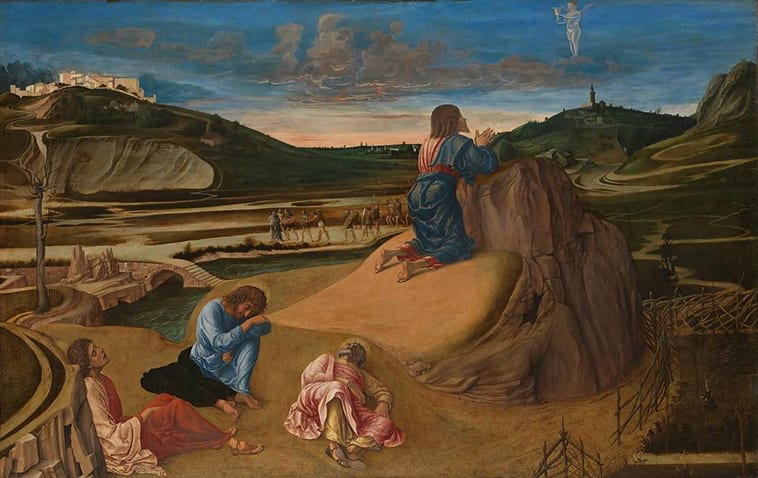
Giovanni Bellini was born into a family of well-known Renaissance artists. His father, Jacopo Bellini, was regarded as one of the founders of Venetian Renaissance painting, and his brother, Gentile, was also a successful painter. It is thus not surprising that Giovanni rose to prominence and is remembered as one of the most influential Venetian Renaissance painters in history.
He revolutionized Venetian painting through the use of slow-drying oil pigments, which created dynamic perspective, vivid details, and deep coloration. He was a great influence on the Venetian school, and his pupils, the most famous among them being the Renaissance master Titian, grew to great success. His famous works include The Agony in the Garden (1458-60), The Feast of the Gods (1514), and St Francis in Ecstasy (1480-85).
Andrea Mantegna (1431-1506): The Master of Perspective

Andrea Mantegna was an expert in classical taste and technique and used egg tempera in his painting. His wife, Nicolosia Bellini, was the daughter and sister of Jacopo and Giovanni Bellini, respectively, making him part of the Bellini family. Mantegna strongly influenced Giovanni in his early years as a painter, as evidenced by Giovanni’s copies of Mantegna’s style and subject matter.
He was a master of perspective, creating landscape art that was sophisticated and structural. He was commissioned by such clients as Francesco II of the Court of Gonzaga (Mantua) and Pope Innocent VIII to produce art and was highly esteemed during his lifetime. Today, he is regarded as a master of his craft and was an influence on other Renaissance artists such as Giorgio Vasari and Leonardo da Vinci.
His famous works include The Triumphs of Caesar (1505), the San Zeno Altarpiece (1455), and Lamentation of Christ (1480).
Sandro Botticelli (1445-1510): The Florentine Renaissance Painter
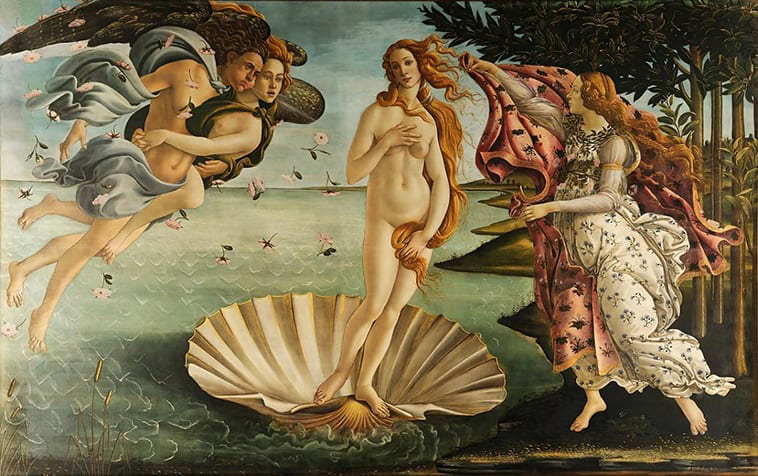
Sandro Botticelli, born Alessandro di Mariano Filipepi in Florence, has been regarded as one of the greatest Florentine Renaissance painters. The name Botticelli was adopted from his older brother, who went by Botticello, meaning “little bottle.” He belonged to the Florentine school under Lorenzo di Medici’s patronage.
His works are said to exemplify the grace and linearity of Early Renaissance painting. He is known for using subject matter from Classical mythology, which was somewhat unprecedented before his time.
His famous works include The Birth of Venus (1484-86) and Primavera (1482), which are both held at the Uffizi Gallery in Florence.
Leonardo da Vinci (1452-1519): The Scientist-Painter
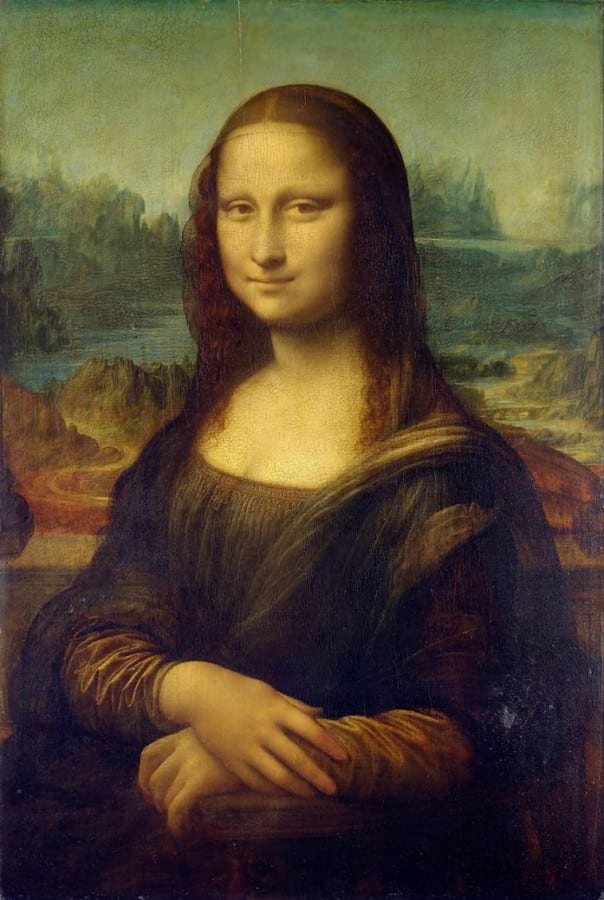
While renowned for drawing, sculpture, mathematics, and engineering, amongst other things, Leonardo da Vinci is esteemed as one of the most talented painters of all time.
His lack of formal training, combined with his many talents and hobbies, turned da Vinci into the original inspiration for the term ‘Renaissance man.’ He was a pupil of Verrocchio, who was the most prominent Florentine painter of his time. Da Vinci’s knowledge of the human form and his coloration make his paintings capture the subtlety and depth of humanity, and even though a sparse number of his works survive today, several of them are considered masterpieces.
His famous works include the Mona Lisa (1503-06) and The Last Supper (1495-98).
Michelangelo (1475-1564): The Renaissance Man

Michelangelo di Lodovico Buonarroti Simoni, known today as Michelangelo, was a High Renaissance painter, architect, sculptor, and poet whose effect on art in contemporary society has been unparalleled. Like his contemporary rival, Leonardo da Vinci, Michelangelo was a jack-of-all-trades and thus a quintessential ‘Renaissance Man.’ Much of his oeuvre survives today, and numerous works are considered masterpieces. In particular, he is celebrated for the physical realism and psychological tension imbued in his works.
He was commissioned for a composition of frescoes within the Sistine Chapel in Vatican City, which are regarded as some of the most influential paintings in Western art history. The most famous of these are The Creation of Adam (1510), The Sistine Chapel Ceiling (1508-12), and The Last Judgment (1536-41).
Raphael (1483-1520): The Philosopher-Painter

Raffaello Sanzio, known simply as Raphael, was a High Renaissance painter and architect. He was a contemporary of da Vinci and Michelangelo, and the three artists together dominated the High Renaissance. He was commissioned to paint several frescoes in the Vatican Palace by Pope Julius II and then by Medici Pope Leo X.
Although he died at age 37, Raphael has a large surviving body of work due to his strenuous work ethic. His work has been praised for its masterful composition and understanding of the human form. His frescoes in the Vatican illustrate the Renaissance’s fascination with Classical thought, underlying the continuity between past and present.
His most famous work is The School of Athens (1509-11) in the Stanza della Signatura in the Vatican.
Titian (1490-1576): The Sensual Painter

Tiziano Vecellio, known contemporarily as Titian, was regarded as one of the most important painters of the Venetian school during his lifetime and remains one of the most renowned master painters of the Italian Renaissance. He was the pupil of the aforementioned Giovanni Bellini.
His work is known for its versatility, not in style but of depth and emotion; his pieces may depict exuberant joy or devastating loss, both as convincing as the other. He was also known for his intense use of eroticism in his works. Some of his most famous works include Bacchus and Ariadne (1523), Venus of Urbino (1538), Assumption of the Virgin (1518), and Venus with a Mirror (1555).
Tintoretto (1518-1594): The “Furious” Painter

Jacopo Robusti (Comin, according to some), known as Tintoretto, was a Venetian Renaissance painter who belonged to the Venetian school. The nickname Tintoretto, “little dyer,” comes from his father’s work as a cloth dyer.
His work was noted for its bold brushstrokes and speed, qualities that earned it both praise and criticism. He was called Il Furioso, or ‘The Furious,’ for his speed, the visceral nature of his works, and the muscular physiques of his figures. He drew heavily on works by both Titian and Michelangelo for inspiration. His vibrant work was appreciated both pre- and posthumously as representative of the experience of Venetian culture, as he lived there throughout his life.
His famous works include The Last Supper (1592-94), Il Paradiso (1588-92), and The Origin of the Milky Way (1575).




